Critical roles for Rictor/Sin1 complexes in interferon-dependent gene transcription and generation of antiproliferative responses
- PMID: 24469448
- PMCID: PMC3945321
- DOI: 10.1074/jbc.M113.537852
Critical roles for Rictor/Sin1 complexes in interferon-dependent gene transcription and generation of antiproliferative responses
Abstract
We provide evidence that type I IFN-induced STAT activation is diminished in cells with targeted disruption of the Rictor gene, whose protein product is a key element of mTOR complex 2. Our studies show that transient or stable knockdown of Rictor or Sin1 results in defects in activation of elements of the STAT pathway and reduced STAT-DNA binding complexes. This leads to decreased expression of several IFN-inducible genes that mediate important biological functions. Our studies also demonstrate that Rictor and Sin1 play essential roles in the generation of the suppressive effects of IFNα on malignant erythroid precursors from patients with myeloproliferative neoplasms. Altogether, these findings provide evidence for critical functions for Rictor/Sin1 complexes in type I IFN signaling and the generation of type I IFN antineoplastic responses.
Keywords: Akt PKB; Antiviral Agents; Cell Signaling; Cytokines/Interferon; Gene Regulation; Interferon; Signal Transduction.
Figures
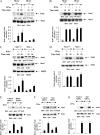
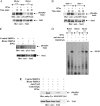
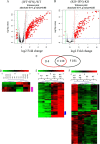
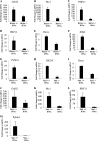
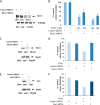
Similar articles
-
Interferon γ (IFNγ) Signaling via Mechanistic Target of Rapamycin Complex 2 (mTORC2) and Regulatory Effects in the Generation of Type II Interferon Biological Responses.J Biol Chem. 2016 Jan 29;291(5):2389-96. doi: 10.1074/jbc.M115.664995. Epub 2015 Dec 8. J Biol Chem. 2016. PMID: 26645692 Free PMC article.
-
Interaction between NBS1 and the mTOR/Rictor/SIN1 complex through specific domains.PLoS One. 2013 Jun 6;8(6):e65586. doi: 10.1371/journal.pone.0065586. Print 2013. PLoS One. 2013. PMID: 23762398 Free PMC article.
-
Regulatory effects of mTORC2 complexes in type I IFN signaling and in the generation of IFN responses.Proc Natl Acad Sci U S A. 2012 May 15;109(20):7723-8. doi: 10.1073/pnas.1118122109. Epub 2012 May 1. Proc Natl Acad Sci U S A. 2012. PMID: 22550181 Free PMC article.
-
Unmasking the impact of Rictor in cancer: novel insights of mTORC2 complex.Carcinogenesis. 2018 Jul 30;39(8):971-980. doi: 10.1093/carcin/bgy086. Carcinogenesis. 2018. PMID: 29955840 Review.
-
The p38 mitogen-activated protein kinase pathway and its role in interferon signaling.Pharmacol Ther. 2003 May;98(2):129-42. doi: 10.1016/s0163-7258(03)00016-0. Pharmacol Ther. 2003. PMID: 12725866 Review.
Cited by
-
Beyond autophagy: New roles for ULK1 in immune signaling and interferon responses.Cytokine Growth Factor Rev. 2016 Jun;29:17-22. doi: 10.1016/j.cytogfr.2016.03.008. Epub 2016 Apr 1. Cytokine Growth Factor Rev. 2016. PMID: 27068414 Free PMC article. Review.
-
Interferon signaling in cancer. Non-canonical pathways and control of intracellular immune checkpoints.Semin Immunol. 2019 Jun;43:101299. doi: 10.1016/j.smim.2019.101299. Semin Immunol. 2019. PMID: 31771762 Free PMC article. Review.
-
Interferon γ (IFNγ) Signaling via Mechanistic Target of Rapamycin Complex 2 (mTORC2) and Regulatory Effects in the Generation of Type II Interferon Biological Responses.J Biol Chem. 2016 Jan 29;291(5):2389-96. doi: 10.1074/jbc.M115.664995. Epub 2015 Dec 8. J Biol Chem. 2016. PMID: 26645692 Free PMC article.
-
Sirtuin 2-mediated deacetylation of cyclin-dependent kinase 9 promotes STAT1 signaling in type I interferon responses.J Biol Chem. 2019 Jan 18;294(3):827-837. doi: 10.1074/jbc.RA118.005956. Epub 2018 Nov 28. J Biol Chem. 2019. PMID: 30487288 Free PMC article.
-
Regulatory effects of a Mnk2-eIF4E feedback loop during mTORC1 targeting of human medulloblastoma cells.Oncotarget. 2014 Sep 30;5(18):8442-51. doi: 10.18632/oncotarget.2319. Oncotarget. 2014. PMID: 25193863 Free PMC article.
References
-
- Dunn G. P., Koebel C. M., Schreiber R. D. (2006) Interferons, immunity and cancer immunoediting. Nat. Rev. Immunol. 6, 836–848 - PubMed
-
- Hervas-Stubbs S., Perez-Gracia J. L., Rouzaut A., Sanmamed M. F., Le Bon A., Melero I. (2011) Direct effects of type I interferons on cells of the immune system. Clin. Cancer Res. 17, 2619–2627 - PubMed
-
- Platanias L. C. (2013) Interferons and their antitumor properties. J. Interferon Cytokine Res. 33, 143–144 - PubMed
Publication types
MeSH terms
Substances
Grants and funding
LinkOut - more resources
Full Text Sources
Other Literature Sources
Molecular Biology Databases
Miscellaneous

